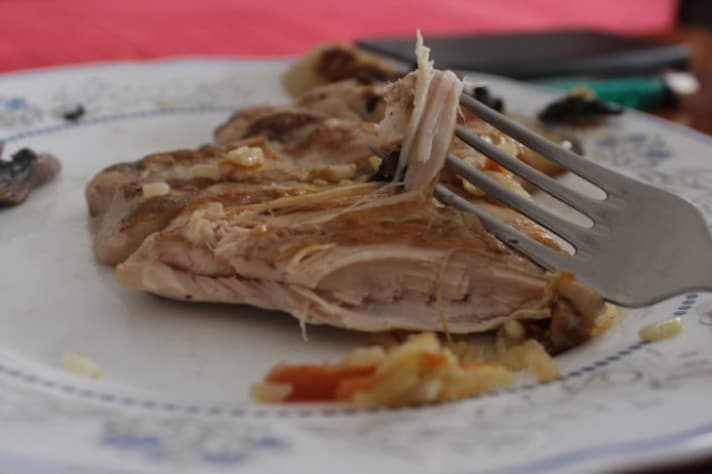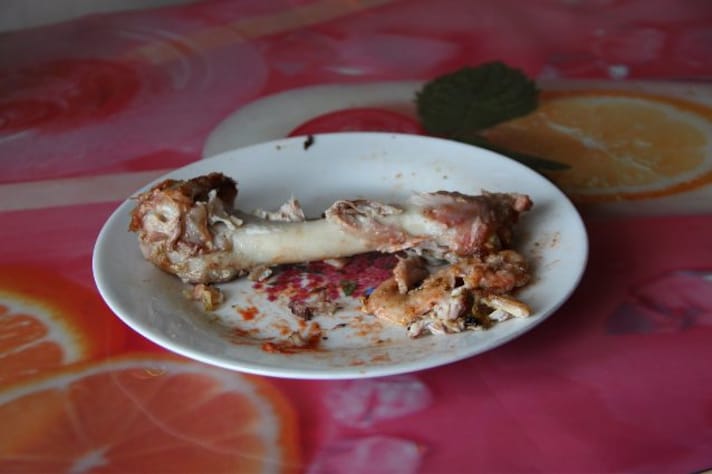
Many home cooks have been taught to avoid pink chicken at all costs, often leading to overcooked, dry meat. However, the presence of pink doesn't necessarily mean your chicken is undercooked or unsafe. Let's delve into the reasons behind pink hues in cooked chicken and how to ensure your poultry is safe to eat.
Why Does Cooked Chicken Sometimes Stay Pink?
1. Myoglobin and Muscle Pigmentation
Myoglobin is a protein found in muscle tissues that stores oxygen. When exposed to heat, myoglobin typically denatures, causing the meat to turn from pink to white. However, certain factors can cause myoglobin to retain its color even after cooking, leading to pink or reddish hues in the meat.
2. Young Chickens and Bone Marrow Leakage
Commercially sold chickens are often slaughtered at a young age, around 6 to 8 weeks old. Their bones are more porous, allowing bone marrow, which is rich in myoglobin, to seep into surrounding tissues during cooking. This can result in a pink coloration near the bones, even if the meat has reached a safe internal temperature.
3. Cooking Methods and Environmental Factors
Certain cooking methods, such as smoking or grilling, can cause chemical reactions that fix the pink color in meat. For instance, the interaction between smoke gases and myoglobin can create a "smoke ring," a pink layer just beneath the surface of the meat.

4. Nitrates, Nitrites, and Marinades
Marinating chicken in solutions containing nitrates or nitrites, or even certain acidic marinades, can also cause the meat to retain a pink color after cooking. These substances can react with myoglobin, stabilizing its color.
Safety First: The Importance of Internal Temperature
The U.S. Department of Agriculture (USDA) states that color is not a reliable indicator of doneness. Chicken is safe to eat when all parts have reached a minimum internal temperature of 165°F (74°C), as measured with a food thermometer. This temperature ensures that harmful bacteria like Salmonella and Campylobacter are destroyed.
To accurately measure the internal temperature:
- Insert the thermometer into the thickest part of the meat, avoiding bones.
- For whole chickens, check the innermost part of the thigh and wing, and the thickest part of the breast.
- Relying solely on visual cues, such as meat color or clear juices, can be misleading. Always use a food thermometer to confirm doneness.
When to Be Cautious
While pink coloration can be normal, certain signs indicate that chicken may be undercooked or unsafe:
- The meat has a translucent or rubbery texture.
- Juices run red or have a bloody appearance.
- The internal temperature is below 165°F (74°C).
If any of these signs are present, continue cooking the chicken until it reaches the safe internal temperature.

Tips to Minimize Pinkness in Cooked Chicken
If the appearance of pink meat is unappetizing, consider the following strategies:
- Debone Before Cooking: Removing bones can reduce the chance of marrow seeping into the meat.
- Use Acidic Marinades: Ingredients like lemon juice or vinegar can lower the pH, affecting myoglobin's stability and reducing pink coloration.
- Avoid Smoking or Low-Temperature Cooking: These methods can fix the pink color in meat. Opt for roasting or baking at recommended temperatures.
;Resize,width=767;)
